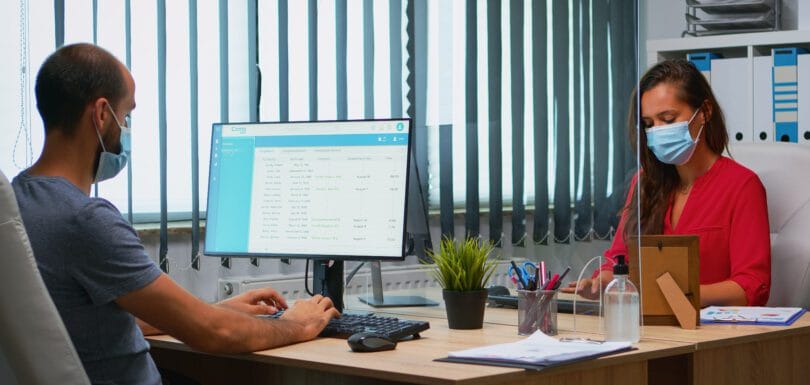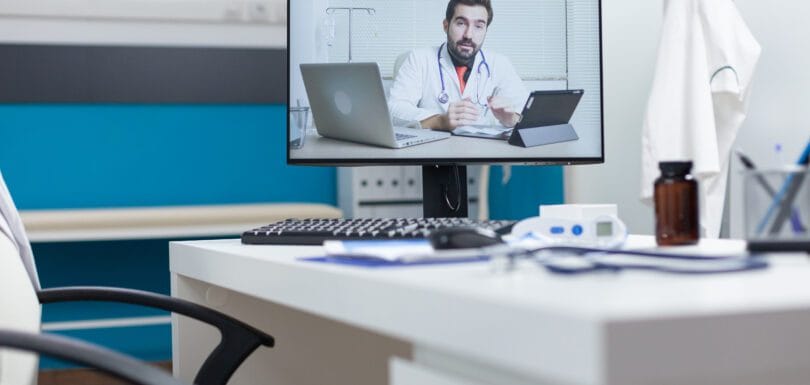How A Virtual Medical Assistant Delivers Remarkable Communication
The Role of a Virtual Medical Assistant in Patient Communication Effective patient communication is the backbone of exceptional healthcare. When patients feel listened to, understood, and genuinely cared for, their confidence in the healthcare system strengthens, leading to improved outcomes and adherence. However, busy clinics often struggle to provide personalized attention consistently. This is where a Virtual Medical Assistant plays a transformative role. VMAs can manage appointment reminders, follow-ups, basic queries, and even patient education in a timely, empathetic manner. Their presence ensures that every patient interaction, no matter how routine, is meaningful and engaging. In addition to keeping patients informed, VMAs help clinics reduce administrative bottlenecks. Patients feel less stressed when they know someone is proactively guiding them through their care journey. With features like secure messaging, telehealth coordination, and follow-ups, a Virtual Medical Assistant ensures that patients are never left in the dark. The emotional impact of feeling cared for virtually cannot be underestimated it can turn an ordinary appointment into a reassuring and pleasant experience. Clinics adopting VMAs notice higher patient satisfaction scores and increased loyalty, as the assistants maintain a balance of professionalism and warmth in every interaction. By integrating VMAs early in patient care, healthcare providers can create a smooth, human-centered communication flow that keeps patients engaged, informed, and reassured throughout their care journey. Understanding Virtual Medical Assistants Virtual Medical Assistants are digital professionals working remotely to manage administrative and communication tasks efficiently. Unlike traditional staff who are limited to physical presence, VMAs leverage technology to provide timely assistance from any location. A Healthcare Virtual Assistant can schedule appointments, send reminders, answer routine patient queries, and even provide follow-up instructions without any delay. On the other hand, a Virtual Medical Office Assistant ensures the daily office workflow remains seamless by coordinating between departments, maintaining records, and assisting healthcare teams with organizational tasks. Key Responsibilities of VMAs: Scheduling and managing appointments Sending timely reminders and notifications Coordinating between departments and providers Maintaining and updating accurate patient records Assisting in telehealth session preparations These assistants act as the bridge between technology and human care. By integrating into electronic systems and telehealth platforms, they maintain efficiency while enhancing patient satisfaction. Their role ensures that patients and staff experience a seamless, reliable, and human-like interaction, even in a digital environment. Focus on Patient Communication Good communication is at the heart of a positive patient experience. When patients clearly understand their treatment plans, upcoming appointments, or medication instructions, it reduces stress and makes them feel genuinely cared for. Misunderstandings or delays, on the other hand, can create unnecessary anxiety and confusion. A Virtual Assistant for Medical Practice bridges this gap by sending timely reminders, providing clear follow-up instructions, and delivering personalized updates that patients can actually understand and act on. Beyond reminders, a Virtual Assistant in Healthcare keeps an eye on patient interactions, noting any concerns or questions and sharing important information with healthcare providers. This creates a reliable feedback loop where nothing gets lost, and patients feel heard. Imagine a patient receiving a friendly, clear message about a test result, a prescription clarification, or an upcoming visit these small touchpoints build trust, reduce stress, and encourage patients to stay on track with their treatment plans. The goal is simple: make every interaction feel thoughtful and human. By maintaining clarity, empathy, and consistency, these approachable for everyone. virtual assistants help patients feel supported and confident, making healthcare less intimidating and more. The Role of a Virtual Medical Assistant in Patient Communication A Virtual Medical Assistant functions as the critical link between patients and healthcare providers. They manage appointment reminders, follow-up calls, and telehealth coordination, making sure patients are never left uncertain about their care steps. Virtual Health Assistants customize communication for each patient, providing clarity on treatment plans, preparation instructions, and medication guidance. A Virtual Assistant Health further ensures that complex medical information is simplified and understandable, reducing stress and promoting confidence in patients. How VMAs Enhance Communication: Personalized appointment reminders and follow-ups Telehealth session coordination and guidance Secure messaging for patient inquiries Clarifying treatment instructions and care plans Tracking patient satisfaction and engagement By centralizing communication, VMAs reduce confusion and eliminate errors, providing a consistent and organized approach. They help patients feel connected and supported throughout their healthcare journey, offering both practical assistance and emotional reassurance. Enhancing Patient Experience Through VMAs Patients appreciate healthcare experiences that feel personal and attentive. Virtual Medical Assistant Services allow clinics to craft messages that reflect a patient’s history, preferences, and ongoing care needs. Similarly, Virtual Assistant Services for Medical Practice ensure that reminders, follow-ups, and educational content feel considerate and timely. Personalized care fosters trust, improves adherence to care plans, and helps patients feel genuinely valued. Ways VMAs Personalize Patient Experience: Tailoring communication based on patient history and preferences Promptly addressing individual patient questions or concerns Offering clear, simple follow-up plans Adjusting communication methods to patient comfort levels Providing empathetic messages that reduce anxiety Through a combination of automation and human-like empathy, VMAs create meaningful connections. Routine administrative tasks are transformed into experiences that positively impact patient perception, turning virtual interactions into reassuring touchpoints that strengthen loyalty. Overcoming Challenges in Virtual Communication Despite their benefits, virtual communication comes with challenges. Not all patients are technologically adept, and connectivity or privacy concerns may arise. A Physician Virtual Assistant provides guidance and support to help patients navigate telehealth systems confidently. Practices adopting a Best Medical Virtual Assistant approach prioritize secure platforms, clear workflows, and user-friendly communication tools. Healthcare teams can address barriers by offering: Step-by-step guidance for digital platforms Quick troubleshooting for connectivity issues Clear privacy and security information Benefits of Using VMAs for Communication Virtual Medical Assistants (VMAs) bring significant advantages to healthcare providers by streamlining communication and administrative processes. A Virtual Medical Administrative Assistant can take over repetitive and time-consuming tasks such as appointment reminders, follow-ups, and patient inquiries. This not only reduces the workload for in-house staff but also minimizes the risk of errors, ensuring that communication remains accurate, timely,









